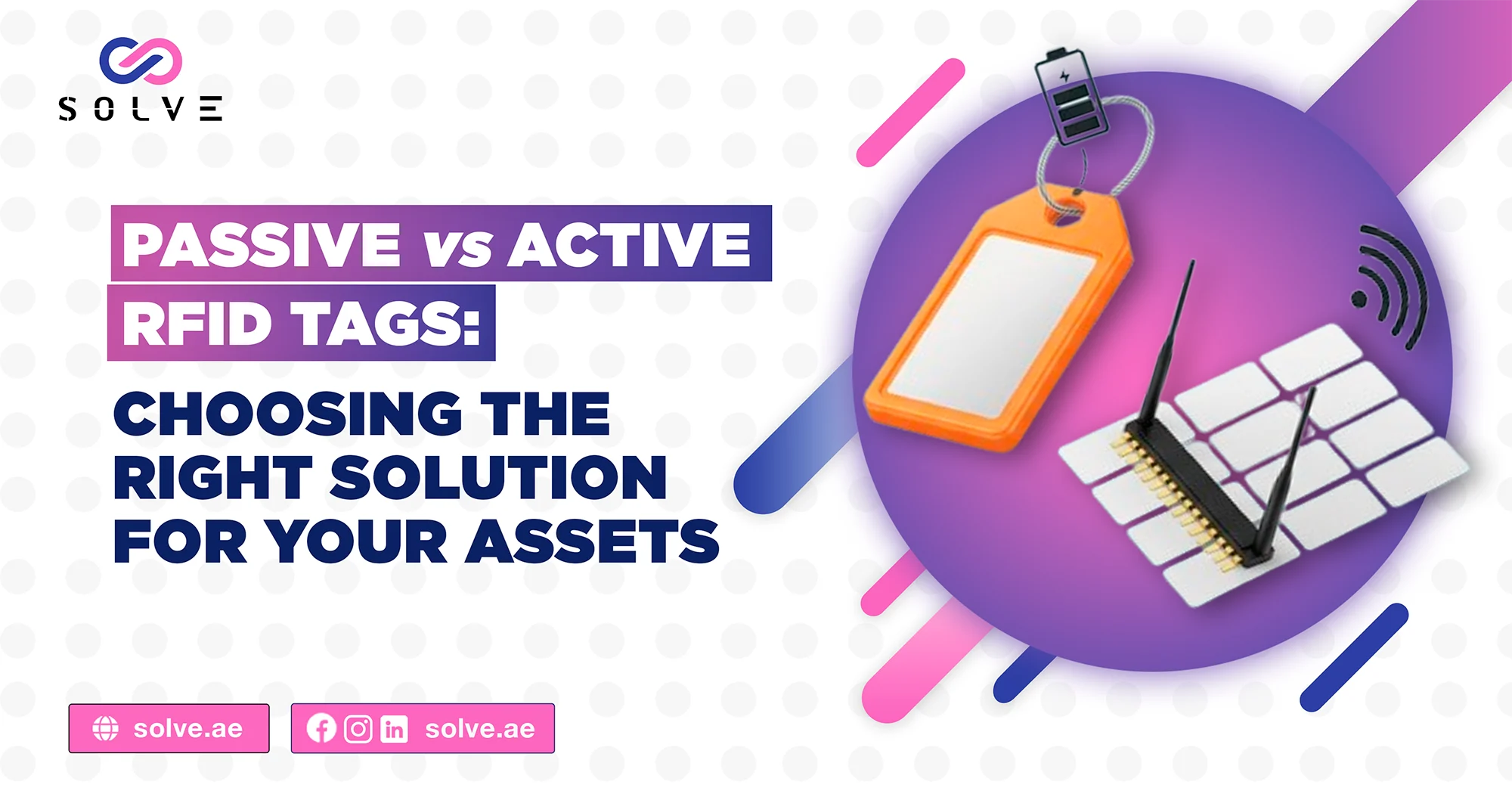- By Vanshika Choudhary
- May 27, 2025
RFID technology is great for tracking and managing property across different sectors. There are two different kinds of tags, perhaps passive and active. Both are different in properties and working methodologies and offer a diverse array of applications in various sectors. It is necessary to clearly distinguish between the two so as to make the right choice for your production asset management needs. This blog will discuss both in detail and emphasize major points of distinction while assisting in choosing the option that suits one’s business the best.
Understanding RFID
Radio waves carry the information used in RFID technology for identifying and tracking tags attached to objects. RFID is a system made up of a tag, an antenna, a reader, and a database. The tag carries the information that is transmitted by the antenna to the reader and is then transferred to the database for processing.
Passive RFID Tags: Inexpensive & Reliable
Being some of the most used tags for the bulk tracking of assets, passive RFID tags make a lot of sense. They do not possess any form of internal power source; this is probably the main advantage, as they rely only on the reader for their power requirements.
Attributes of Passive RFID Tags
No Internal Power Source
Passive RFID tags do not carry a battery within their structure. The electromagnetic energy sent from an RFID reader powers these tags. Since there are no batteries to maintain, passive tags are very light and thin physically and, therefore, very durable in design.
Shorter Signal Range
The range of detection of passive RFID tags is quite limited and usually lasts from some centimeters to 10 meters, and this depends on the frequency and antenna size. With such a short range, there is minimal risk of interference from other signals, thereby rendering passive tags highly reliable for close-proximity tracking.
Longer Life Expectancy
As passive RFID tags have no battery, their lifespan is not limited by power drainage. They can go on functioning for years and usually outlast the life of the asset to which they are affixed. The long life of operation makes passive RFID tags a very practical option for any business that would be wishing to eliminate the periodic maintenance and replacement.
Low Cost and Versatility
Being very cheap, passive RFID tags start at just a few cents each. With prices so low, companies may go ahead and tag thousands or even millions of items freely. Another plus of the passive tag is the diverse styles available, from flexible and thin inlays for easy attachment of items to big, bulky, hard plastic tags that survive heavy environmental conditions, including high temperatures and outdoor weather.
In Realm of Active RFID Tags: Potent and Real-Time Tracking
Active RFID tags have their own onboard power source blessed with a transmitter that allows them to send signals all the time or at set intervals while purposefully tracking high-value or mobile assets in real time over large areas.
Having an Internal Battery or a Built-in Transmitter
Active RFID tags contain a battery inside that powers the microchip and the transmitter, allowing it to send signals to a receiving station without being dependent on the power from a reader. This internal battery lasts for about three to five years, after which one has to either replace the battery or recharge it. Battery presence increases the size and weight of active tags somewhat, although such tags can contain more features than passive tags because of the presence of the battery.
Longer Range Camping
In the generation of the best, there is no competition. The long range enables environmental application real-time location tracking, which is very lucrative in the logistics domain or fleet management and industrial applications. check out our latest blog post on How to Optimize Your Website for Local Mobile Searches
Continuous or On-Demand Data Transmission
Active RFID tags can broadcast the location and status either continuously or only when queried by a reader, supporting systems for RTLS and monitoring environmental conditions such as temperature or humidity. Additionally, some active tags have substantial data storage capacity, rendering them to be align-forward applications that necessitate detailed asset histories or sensor integration.
How to Determine the Right RFID Tag for Your Assets
Depending on some crucial factors, one selects either a passive tag or an active one. Understanding your own needs will help you make the right choice for your own business.
Type and Value of Assets
As far as high-value and mobile assets requiring real-time monitoring are being tracked, they are the ones for which active RFID tags are usually preferred. They are able to constantly update and communicate over a very long range, making them classic choices for expensive equipment, vehicles, or valuable shipments.
Signal Range Required
Consider the physical environment. On the other hand, active tags are necessary during the tracking of assets in very large areas, such as warehouses or shipping yards, or during transports for long-range communications and real-time updates.
Budget and Scale of Deployment
Since tagging costs remain low, mass deployment for any industry could mean tagging thousands or even millions of items. An asset under active RFID surveillance is so costly, considering its value, that the asset owner would willingly pay the higher upfront costs for the value obtained through active RFID tag baselining. It makes sense to factor in the total cost of ownership for implementation scenarios, including maintenance and service life battery replacement.
Maintenance capabilities
Generally, passive types of RFID tags are non-maintainable and hence are suitable where maintenance is not viable or practical. Whereas with an active RFID tag, batteries may require replacement or recharging, and maintaining them means additional costs and other issues to address. This is something to consider between the two while reviewing whether your team will be able to shoulder the work of maintaining it.
Conclusion
A decision between passive and active RFID tags depends on your particular asset tracking requirements. Active RFID tags provide more potent tracking at long range through real-time data feeds for high-value or mobile assets, but at higher costs and maintenance requirements. Assess your assets, environment, and budget considerations to determine the ideal fit for your business. Ready to maximize your RFID Asset Trackers? Give us a call to schedule a meeting with one of our experts to discuss your needs and choose the right RFID solutions for you!




